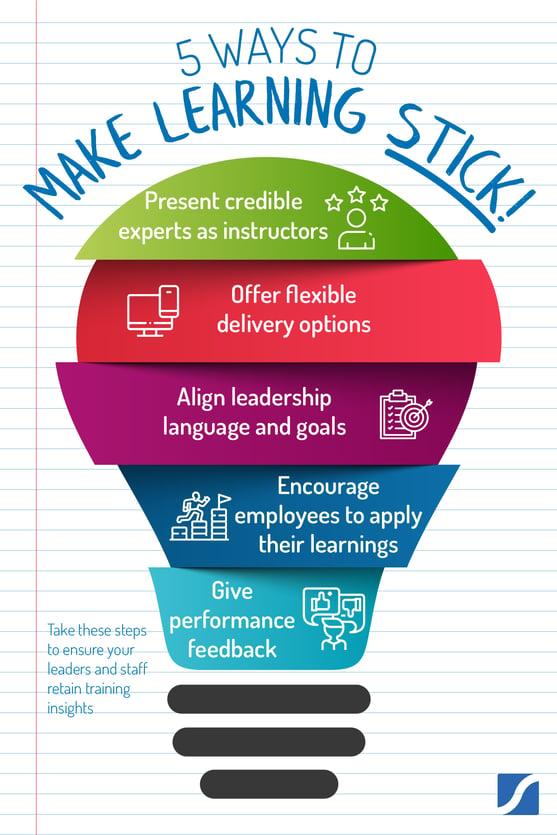The Corporate University: How To Grow Your Business With Focused Employee Training


Jack Welch, the longtime leader of General Electric (GE), was a firm believer in the value of corporate learning.
“An organization’s ability to learn, and translate that learning into action rapidly, is the ultimate competitive advantage,” he said.
The numbers show that Welch was on to something.
Research has found that companies investing in employee training:
- Boast profit margins that are 24% higher than those of companies that don’t
- Generate shareholder return that’s 6% higher when per-employee training expenditure increases by $680
Those figures, reported by The Huffington Post, look good, right? But beware: It’s not just any corporate training that gets the job done. After all, many businesses provide training for their employees.
But to be effective, your approach for how to train employees should contain the following elements:
- Shared direction and strategy
- Common language
- Strong commitment to support employees’ needs
Building a corporate university is a great way to put these ideas to work in your training—and grow your business by growing your people.
What Is A Corporate University?
The Society for Human Resource Management (SHRM) defines corporate universities as strategic tools that assist a company in its mission by expanding individual and business learning and knowledge.
Welch put his belief in corporate learning to work by creating a corporate university at GE, called Crotonville. Verne Harnish wrote about the training program in his book The Greatest Business Decisions Of All Time. But you don’t have to have a business that’s worth hundreds of millions of dollars to implement this internal business school approach to corporate training.
You can create your own version of a corporate university simply by going beyond the typical tactical approach to training and becoming more strategic in focus. Your training should engage your employees, help them understand their purpose in your company, and work to solve your company’s challenges.
Why Build A Corporate University?
Research shows comprehensive corporate training correlates to a stronger bottom line. But what, specifically, is the return on investment (ROI) for taking a targeted, corporate university-style approach in how to train employees? Showing the value of strategic corporate training is critical in shaping and strengthening your staff and leadership training efforts.
The ROI of effective corporate training is impressive, according to George “Bud” Arquilla III, a consulting executive and business coach. In fact, you can net as much as a 300% return on an investment in executive training.
Not only that, but corporate training can yield improvements in:
- Employees’ ability to cope with, adapt to, and learn from rapidly changing environments
- Corporate communication, teamwork, and problem-solving skills
- Self- and leadership-awareness skills
- Staff and leadership morale and energy
- Relationships between employees and management
- Employee engagement
- Staff retention
- The ability to attract A-players to your team
LinkedIn’s annual workforce learning surveys show the value of training in fostering a healthy work environment. The 2019 report, for example, shows that 94% of employees would be more likely to stay with a company if it supports their learning.
How Do You Create A Corporate University?
If most companies offer training, how do you create a corporate university that stands above the crowd and makes an impact in the areas listed above? Think of the needs of your business and its employees, focusing on ROI, ditching corporate drama, and sharing critical strategies.
Begin And End With ROI
Keep the training ROI you want to achieve in mind as you develop your corporate university and work toward your goals.
If you set your initial training amount at about 2% of your current payroll, you can expect to see outstanding returns in as little as six to 12 months after the start of your corporate university approach.
Evaluating training ROI requires steps such as selecting factors to consider, determining how to quantify results, estimating costs, and measuring outcomes following the training.
Embrace A Growth Mindset
Training for leaders and staff is essential. Not only for ensuring that current management has the tools to meet its goals, but that future leaders are ready to step in for the next set of challenges.
Align leadership and staff on strategic objectives—and individual roles in accomplishing them. This is critical in staving off the drama that comes from mismatched priorities.
Recognize Shared Training Vs. Self-Education
Self-education is important. Just ask Harnish, who calls being a learner a requirement to work for him.
But shared training is more impactful for growing your business. Team training can focus on your company’s needs and align with its culture. It also can help foster a winning culture by encouraging conversations, strengthening relationships, and driving engagement
How To Train Employees And Make Learning Stick
Achieving measurable ROI requires training that leaders and employees can put to work in their day-to-day roles. The following 5 factors can boost the odds that your leadership training will stick with staff after the sessions end.
1. Present Credible Experts
A successful corporate university requires presenters with both expertise and credibility. Not only must they have the education and experience that puts power behind what they say, but they also must know how to convey that expertise through solid instruction. This village of gurus is critical in scaling up your business.
2. Offer Flexible Delivery Options
The COVID-19 pandemic drove home the value of working and learning through a variety of delivery options. Employees have different learning styles, schedules, and commitments that can make an entirely synchronous training program impractical.
Instead, opt for training through a mix of synchronous, asynchronous, face to face, and other delivery options. Asynchronous learning options make training available at multiple times that allow access for those who missed the live session or need a refresher.
3. Align Leadership Language And Goals
Shared training helps ensure that leaders and staff are on the same page, with a common foundation and perspective that build a strong and cohesive team.
Your corporate university should spur discussions that help employees align on core values and language. This shared vision helps your company navigate any crisis without having to change its principles and priorities.
4. Encourage Employees To Apply Their Learnings
Effective leadership involves more than theory. It requires putting training to work as soon as possible after it ends.
Research shows that within a week, people forget 90% of new information. Help your employees retain the knowledge they’ve gained—and boost your training ROI—by giving them quick opportunities to make what they’ve learned a part of their habits.
5. Give Performance Feedback
Reinforce lessons learned through corporate training by giving leaders and staff feedback on their performance. Where have they met the mark in following their training? Where is there room for improvement? Providing timely feedback that allows opportunities for making any necessary adjustments can make training more impactful.
Develop Your Own Corporate University
Building a corporate university for your business can deliver an ROI of 300% and increase your profit margins by 24%.
If you’re ready for your organization to experience benefits that range from managing change to retaining staff, take a deeper dive into developing a comprehensive training program. Check out our guide “Growing Your Business By Growing Your People” to see:
- Tips for offering effective training
- Examples of training at work
- Perspectives from thought leaders
- Success stories from today’s companies
Download the guide today to get more bang for your training buck—and gain what Welch described as the “ultimate competitive advantage” for your own company
.




